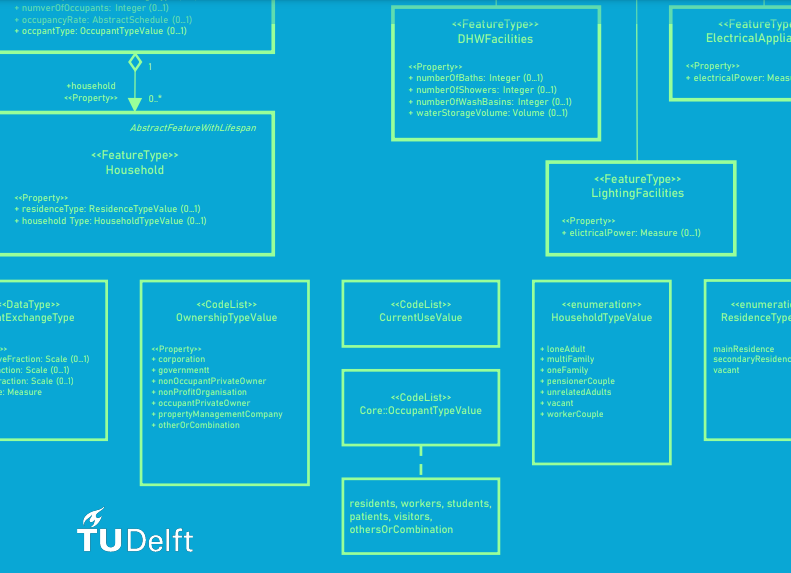
Mapping the Energy ADE to CityGML 3.0
In order to limit the global warming to well below 2 degrees Celsius, all sectors have to reduce their greenhouse gas emissions and become more sustainable. This also includes the building sector, which is in Europe responsible for 40% of the total energy consumption (European Commission, 2020). A way to work towards this goal is by retrofitting the existing building stock to become more energy efficient. Urban Building Energy Modelling (UBEM) can help in this endeavour by identifying energy-saving potentials and thus to effectively allocate the required resources (Horak et al., 2022). Yet, UBEM involves many stakeholders which is why standards are crucial to facilitate data exchange and interoperability among them. In this context, the Energy ADE v1.0 was developed as an extension for the semantic 3D city model standard CityGML 2.0. It serves two purposes, first by storing energy related information on the individual building level, and second by providing the necessary input data for UBEM simulations (Agugiaro et al., 2018). However, in September 2021 CityGML 3.0 was released. The introduced changes directly affect the structure of the Energy ADE, which is why it cannot fully function on it anymore. This thesis therefore answers the question, how and to what extent the Energy ADE for CityGML 2.0 needs to be adapted to be conformant with the new CityGML 3.0 standard. It is accomplished by following a model-driven approach, where the UML class diagrams for the mapped Energy ADE are created first, before automatically deriving the corresponding XSD schema file. Through the lossless mapping itself, the Energy ADE is integrated as much as possible into CityGML 3.0, while also maintaining a logical symmetry. As such it accounts for the introduced changes of CityGML 3.0, by making use of the space and geometry concept, the versioning possibilities as well as the provided structures to model time-dependent data. The result is eventually tested and verified by converting a sample dataset to the Energy ADE for CityGML 3.0. This work provides an example on how other ADEs can be adapted to fit the new CityGML 3.0 standard and thus hopefully to the further establishment of it.
More information
- Master thesis 'Mapping the Energy ADE to CityGML 3.0'